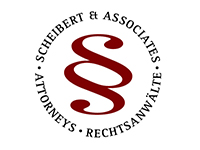
Bodies Corporate: Before You Sequestrate to Recover Arrears…
“Bankruptcy - a fate worse than debt” (Anon)
One of a Body Corporate’s fundamental duties is to collect monthly levies from the scheme’s members, and to take robust action to recover any arrears. As with any other creditor/debtor relationship however, trying to recover debt can be an exercise in frustration and delay, and the more recalcitrant the debtor, the greater the temptation to “go straight for the jugular” by applying to sequestrate the debtor’s estate.
You will have to show that the sequestration is to the advantage of creditors as a whole – not just to you - but that isn’t the only consideration. You will be throwing good money after bad if you end up having to pay a “contribution to the costs of sequestration”.
The recent case of a sectional title Body Corporate, which perhaps thought that it was protected from this particular danger because of its statutory preferences for recovery of arrear levies prior to transfer, illustrates the danger.
But before we get to the facts and the outcome of that case let’s have a quick look at the general principles involved.
What is a “contribution to costs” and who has to pay it?
If you want to share in the net proceeds of an insolvent estate, you must formally prove your claim at a meeting of creditors convened by the trustee of the insolvent estate. If you don’t do that, you wave goodbye to any possible dividend and will be writing off the debt.
On the other hand, if you decide to prove your claim you may be at risk of having to pay into the estate as well as writing off the debt - talk about adding insult to injury! That danger arises if the costs of sequestrating the estate exceed the funds in the estate available to pay them. In that event the trustee of the insolvent estate will recover a “contribution to costs” from proved creditors – including you if your claim was proved as above.
The special danger of being the “petitioning creditor”
The creditor who applies for the debtor’s sequestration is - as “the petitioning creditor” – liable to contribute to the shortfall even without proving a claim. In other words, unlike other creditors, you cannot protect yourself from contributing to costs by holding back the claim – you are “deemed” to have proved it. That’s why, although applying for sequestration can be an excellent way of recovering debt from a recalcitrant debtor, it is essential to first consider the danger of contribution.
How “secured creditors” can protect themselves
Also relevant to our story is that a creditor holding security (such as a bond over the insolvent’s property) must prove its secured claim in order to be paid out the net proceeds of its security. A secured creditor can, if it suffers a shortfall after being paid out those net proceeds of its security, also share in the “free residue” of the estate. The “free residue” is the net proceeds of all unencumbered assets available for distribution to creditors. The secured creditor’s share in this event will be based on the “concurrent” portion of its claim, in other words it is now a concurrent creditor.
This is where the danger comes in because any contribution payable is payable in the free residue by concurrent creditors. A secured creditor can largely protect itself from this danger by “relying on the proceeds of its security” to satisfy its claim. By doing so it waives its concurrent claim for the shortfall, but equally it no longer has to contribute along with the other proved (or petitioning) concurrent creditors. It will now only have to contribute when there are no other such creditors, or when other contributors are unable to pay their share.
The case of the Body Corporate that sequestrated to recover arrears – and paid the price
Let’s see how those principles were applied in a recent Supreme Court of Appeal (SCA) case -
- The owner of two sectional title units, bonded to separate banks, was unable to pay his levies. The Body Corporate sequestrated his estate, and his two units were sold. Only the two banks proved claims.
- This was where the Body Corporate’s statutory protection for arrear levies came in. No transfer can be registered in the Deeds Office until all rates and taxes (and levies in the case of Bodies Corporate and Homeowners Associations) have been paid in full. Thus the arrear levies were paid in full to the Body Corporate by the transferring attorneys. “Done and dusted” thought the Body Corporate, but it was not to be.
- There was a shortfall in the insolvent estate, and the trustee tried to recover the resultant contribution from the two banks (the bondholders) who had proved their claims in the estate.
- The banks objected, arguing that because they had relied on their security in proving their claims, they were not liable to contribute (as above). The Body Corporate, they argued, was as the petitioning creditor liable for the contribution despite not having proved its claim.
- The Body Corporate on the other hand argued that it could never be liable for a contribution. Although it was indeed the petitioning creditor, it had never proved a claim against the estate and the arrear levies had been paid to it in full, as required by law, before transfer of the properties.
- To cut a long story short, the dispute wound its way through our courts and ended up in the SCA, which, after a detailed examination of the relevant law, held the Body Corporate as petitioning creditor to be solely liable for the full amount of the contribution to costs (R46 663.16).
Bodies Corporate beware!
The Court’s reasoning in reaching this conclusion will be of great interest to the lawyers amongst us, but the bottom line for Bodies Corporate is this – if you sequestrate to recover arrears, you could well end up carrying the full brunt of any contribution to costs.
So perhaps take advice on whether you can/should rather use other debt collection processes, including perhaps applying to the CSOS (Community Schemes Ombud Service) to order and enforce payment of the arrears.
Provided by Scheibert & Associates Inc
© DotNews. All Rights Reserved.
